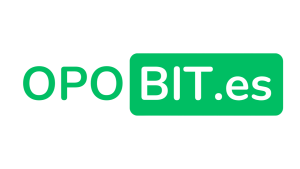Selma Meade
Entrada del blog por Selma Meade
Difficulties in Tracking Social Media for Intellectual Property Theft
As digital platforms continue to gain traction, they have become a breeding ground for information exchange, originality, and artistic expression. However, this rapid dissemination of content also brings serious hurdles, particularly in the realm of copyright protection. Tracking social media for intellectual property theft has become a difficult and challenging task for producers, organizations, and rights holders. This article delves into the primary obstacles associated with this issue.
1. Sheer Amount of Content
Social networks generate an massive quantity of content every second. With countless users uploading visuals, clips, tunes, and articles, it is virtually unmanageable to manually monitor every media file for potential intellectual property theft. The massive size of the task requires automated tools, which are not always foolproof and can miss complex breaches.
2. User-Created Media
A large part of social media content is user-generated, meaning it is developed and uploaded by individuals rather than professional creators. This makes it difficult to identify the creator of the content and determine whether it has been used with necessary permissions. Users often share again, rework, or edit content without comprehending intellectual property regulations, leading to inadvertent breaches.
3. Lack of Standardized Metadata
Unlike established media, social media content often lacks consistent metadata, such as ownership information, creator identification, or rights of use. This makes it challenging to determine the rightful owner of the content and check whether its use is authorized. Without specific meta information, automated detection systems struggle to detect violations effectively.
4. Sharing Across Platforms
Content shared on one platform can rapidly circulate to others, making it difficult to track and enforce copyright across different sites. A video posted on a popular video site, for example, can be extracted, https://www.lovetoytest.net/forum/topic/91885-content-protection-service modified, and shared again on a photo-sharing app, a social media app, or a microblogging site. This cross-platform sharing makes difficult the monitoring process, as rights holders must supervise diverse channels simultaneously.
5. Fair Use and Gray Areas
Copyright laws often include provisions for limited use, which allows allowed use of copyrighted material without clearance for purposes such as evaluation, commentary, or spoof. However, determining what constitutes allowed use can be subjective and contextual. This creates gray areas where it is problematic to definitively identify violations, leading to arguments and legal ambiguities.
6. Unidentified and Fraudulent Accounts
Social networks are full of pseudonymous or false profiles that can be used to circulate copyrighted material without attribution. These accounts make it difficult to trace and hold violators accountable, as following the source of the infringement becomes almost unfeasible.
7. Global Nature of Social Media
Social networks operate on a worldwide level, with users from different countries. Legal protections differ greatly across regions, making it challenging to enforce rules consistently. A content item that is legally safeguarded in one region may not be in another, adding complexity to the monitoring process for global copyright owners.
8. Technological Challenges
While progress in machine intelligence and ML have advanced content monitoring, these technologies are not free from issues. Technological solutions may find it hard to detect complex breaches, such as partial reproductions. Additionally, inaccurate flags can occur, identifying valid material as violations and creating avoidable controversies.
9. Resource Constraints
Observing social media for copyright infringements requires considerable effort, including time, funds, and skills. Individual producers and companies may lack the resources to deploy comprehensive monitoring systems, leaving them more at risk to infringement. Larger organizations, while more resourced, still face challenges in expanding their operations to match the scale of content on social media.
Conclusion
The challenges of supervising social media for copyright violations are multifaceted and developing. Addressing these issues requires a blend of technological innovation, legal guidelines, and user understanding. Platforms, creators, and rights holders must collaborate to create effective strategies that reconcile creative sharing with copyright enforcement. While the road ahead is complex, finding solutions is essential to encouraging a just and imaginative virtual world.
